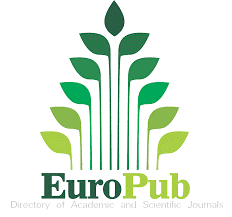Natural Regeneration: A review of the ecological aspects in the tropical mountain forest of southern Ecuador
Keywords:
seed dispersal, germination, tropical mountain forests, natural regeneration, ecological processesAbstract
The natural regeneration is a fundamental characteristic to ensure the sustainability of the floristic resource through the time however there is a bottleneck in its establishment that concentrates in the dispersion and the germination of the seeds. The way the seeds move from one place to another, the changes or strategies they make to take advantage of environmental factors and dispersing agents such as birds and bats are key aspects that must be studied to guarantee the forest’s functionality. Seed germination and seedling establishment are subject to biotic and abiotic factors: light, edaph-ic factors, temperature can have an effect on the spatial distribution of species in tropical forests. Throughout ten years of monitoring of natural regeneration in the tropical mountain forest of San Francisco Reserve, it is observed that although the forest species produce seeds, not all of them can germinate, the germination rates are low and it is reduced the number of individuals who man-age to establish themselves therefore needs to understand how the physiological aspects in these ecosystems develop. Natural regeneration is a cyclical ecological process that depends on specific biotic and abiotic factors, as well as on the anthropic interventions that are made conditional on the future permanence of the species and, therefore, the diversity of the tropical mountain forests. The article presents a review of ecological processes such as the dissemination and seed germination in the tropical mountain forests of southern of Ecuador, which are characterized by the biodiversity that they harbor and by the pressures to which they are subjected.References
Abusaief, H. M. A., Alwishish F. M. (2017). Survey of endangered plants and description the seedsin some sitesat Al-Jabal Al-Akhdar of Libya. Curr. Sci. Int., 6(3): 511-539, 2017ISSN 2077-4435
Abraham de Noir, S. Bravo, R. Abdala. (2002). Mecanismos de dispersión de algunas especies de leñosas nativas del Chaco Occidental y Serrano. Revista de Ciencias Forestales – Quebracho N° 9 – Diciembre 2002.
Andresen, E. (2000). The role of dung beetles in the regeneration of rainforest plants in Central Amazonia. Ph.D. Thesis, University of Florida, Gainesville, Florida.
Alvarado C., Encalada M. (2010). Estudio fenológico, análisis y almacenamiento de semilla, de seis especies forestales nativas en bosque tropical montano, potenciales para la reforestación en la Estación Científica San Francisco. Tesis Ingeniería Forestal.
Barot, S., Gignoux. J, & Mgnaut, J.C. (1999). Seed shadows, survival and recruitment: How simple mechanisms lead to dynamics of population recruitment curves. Oikos 86:320-330.
Baskin C. C. & Baskin J.M. (2001). Seeds. Ecology, Biogeography and Evolution of dormancy and germination. Academic Press. San Diego, CA, USA.
Baskin C. C, & Baskin J. M. (2014). Seeds: ecology, biogeography, and evolution of dormancy and germination, 2nd edn. San Diego, CA, USA: Academic/Elsevier.
Bussmann, R.W. (2003). Los bosques montanos de la Reserva Biológica San Francisco: zonación de la vegetación y regeneración natural (en línea). Lyonia 3 (1): 57-72. Consultado 10 sep. 2017. Disponible en http://www.mtnforum.org
Bussmann, R. W. (2005). Bosques andinos del sur de Ecuador, clasificación, regeneración y uso (en línea). Revista Peruana de Biología 12 (2): 203-216. Consultado 10 sep. 2017. Disponible en http://www.revistasinvestigacion.unmsn.edu.pe.
Calva, O; Beltrán, G; Günter, S; Cabrera, O. (2007). Impacto de la luz sobre la regeneración natural de Podocarpáceas en los bosques de San Francisco y Numbala (en línea). Bosques Latitud Cero no. 3: 21–23. Consultado 10 sep. 2017. Disponible en http://w3.forst.tu-muenchen.de/~waldbau/litorg0/2018.pdf
Camacho F. (1994). Dormición de semillas: causas y tratamientos. México, DF: Editorial Trillas, 1994. 128 p.
Campoe, O. C., Stape, J. L., Nouvellon, Y., Laclau, J. P., Bauerle, W. L., Binkley, D., & Le Maire, G. (2013). Stem production, light absorption and light use efficiency between dominant and non-dominant trees of Eucalyptus grandis across a productivity gradient in Brazil. Forest Ecology and Management, 288, 14–20. doi: https://doi.org/10.1016/j.foreco.2012.07.035
Contreras M. (2012). Germinación de semillas de especies nativas de los pastizales del altiplano del norte de México. Universidad Autónoma de Nueva León. Tesis de Maestría Ciencias Forestales.
Chong, C. y Bible, B. B. y Hak-Yoon Ju. (2002). Germination and emergence. [online] En: M. Pessarakli (Ed.). Handbook of plant and crop physiology. 2a. ed. [online] New York: Marcel Dekker Inc, p. 85-146. ISBN: 0-8247-0546-7
Clark, J. S., B. Beckage, P. Camill, B. Cleveland, J. HilleRisLambers, J. Lichter, J. MacLachlan, J. Mohan, and P. Wyckoff. (1999). Interpreting recruitment limitation in forests. American Journal of Botany 86:1–16.
Domínguez-Domínguez L., Jorge E. Morales-Mávil & Juan Alba-Landa. 2005. Germinación de semillas de Ficus insipida (Moraceae) defecadas por tucanes (Ramphastos sulfuratus) y monos araña (Ateles geoffroyi). Rev. Biol. Trop. (Int. J. Trop. Biol. ISSN-0034-7744) Vol. 54 (2): 387-394, June 2006.
Doria J. Generalidades sobre las semillas: su producción, conservación y almacenamiento. Cultivos Tropicales, 2010, vol. 31, no. 1, p. 74-85
Estrada, A., and Coates-Estrada, R. (1984). Fruit-eating and seed dispersal by howling monkeys in the tropical rain forest of Los Tuxtlas, Mexico.Am. J. Primatol 6: 77–91.
Estrada, A., and Coates-Estrada, R. (1986). Frugivory by howling monkeys (Alouatta palliata) at Los Tuxtlas, Mexico: Dispersal and fate of seeds. In Estrada, A., and Fleming T. H. (eds.),Frugivores and Seed Dispersal, W. Junk, The Hague.
Finegan, B. (1992). The management potential of neotropical secondary lowland rain forest. Forest Ecology and Management 47:295–321.
Galindo- Gonzales J. S. Guevara y V.J. Sosa. (2000). Bat and bird generated seed rains at isolated trees in pastures in a tropical forest. Conservation Biology 14: 1693-1703.
García A. 1991. La dispersión de las semillas. Ciencias núm. 24, octubre-diciembre, pp. 3-6. (en línea)
Günter, S., Stimm, B., Cabrera, M., Diaz, M., Lojan, M., Ordoñez, E., Weber, M. (2008). Tree phenology in montane forests of southern Ecuador can be explained by precipitation, radiation and photoperiodic control. Journal of Tropical Ecology, 24(3), 247-258. doi:10.1017/S0266467408005063
Harper, J. L. (1977). Population biology of plants. Academic Press.
Harrison, R. D. (2005). Figs and the diversity of tropical rainforest. BioScience, 55: 1053-1064.
Howe, H.F. & G.F. Estabrook. (1977). On intraespecific competition for avian dispersers in tropical trees. Amer. Natur. 111: 817-832.
Jaramillo, L; Muñoz, L. (2009). Evaluación de la regeneración natural de especies forestales del bosque tropical de montaña en la Estación Científica San Francisco bajo diferentes intensidades de raleo selectivo. Tesis Ing. Forestal. Loja, EC, Universidad Nacional de Loja. 136p.
Jurado, E., (2000). Germination in Tamaulipan thornscrub of north-estern Mexico. Journal of Arid Environments. 46, 413-424.
Kiss, K; Bräuning, A. (2008). El bosque húmedo de montaña: investigaciones sobre la diversidad de un ecosistema de montaña en el Sur del Ecuador (en línea). Fundación Alemana para la Investigación Científica (DFG), TMF y Naturaleza y Cultura Internacional (NCI). Loja - Ecuador. Disponible en: http://www.naturaleza ycultura.org/docs/bosque_humedo.
Laborde, F. J. (1996). Patrones de vuelo de aves frugívoras en relación a los árboles en pie en pastizales tropicales. Tesis de Licenciatura, Facultad de Ciencias, Universidad Nacional Autónoma de México, México.
Laman, T.G. (1995). The ecology of strangler fig seedling establishment. Selbyana 16: 223-229.
Linares E., Moreno-Mosquera E. (2010). Morfología de los frutiolos de Cecropia (Cecropiaceae) del pacifico colombiano y su valor taxonómico en el estudio de dietas de Murcielago. Caldasia, Volumen 32, Número 2, 2010. ISSN electrónico 2357-3759. ISSN impreso 0366-5232. http://dx.doi.org/10.15446/caldasia
Lucas Borja, ME; Candel Pérez, D; Molero Carrasco, J; Monreal Montoya, JA; Botella Mirales, O; Rubio Moraga, A; Ahrazem, O; Gómez Gómez, M. L. (2013). La regeneración natural del pino laricio (Pinus nigra Arn. Ssp salzmannii): Resultados después de quince años de investigación (en línea). Sexto Congreso Forestal Español. Sociedad Española de Ciencias Forestales. 10 p. Consultado 05 sep. (2017). Disponible en http://www.congresoforestal.es/actas/doc/6CFE/6CFE01-004.pdf
Madrigal, J; Hernando, C; Guijarro, M. (2011). El papel de la regeneración natural en la restauración tras grandes incendios forestales: el caso del pino negral (en línea). Boletín Informativo del CIDEU no. 10: 5-22. Consultado 10 sep. 2017. Disponible en http://www.uhu.es/cideu/Boletin/Boletin10/BolInf10CIDEU5-22.pdf
Martinez Orea Y., Silvia Arguero., P. Guadarrama. (2009). La dispersión de frutos y semillas. Ciencias 96. Octubre – Diciembre.
Morpeth, D.R., Hall,A.M., (2000). Microbial enhancement of seed germination in Rosa corymbifera ‘Laxa’. Seed Sci Res. 10:489-94.
Muller-Landau, H.C., Wright, S. J., Calderón, O., Hubbell, S.P., & Foster, R.B. (2002). Assessing recruitment limitation: concepts, methods, and case-studies from a tropical forest.En D.J. Levey, W.R. Silva, & M. Galetti (eds.) Seed Dispersal and Frugivory: Ecology, Evoluation and Conservation pp. 35-53, CAB International, Wallingford, Oxfordshire.
Muñoz, J. (2014). Efectos en la regeneración natural en claros por tratamientos silviculturales en un bosque tropical de montaña del sur del Ecuador (en línea). Revista CEDAMAZ 1 (5): 66-80. Consultado 19 sep. 2017. Disponible en http://unl.edu.ec/sites/ default/files/investigacion/revistas/2014-9-4/articulo_5_-_66_-_80.pdf
Naithani, S.C., N. Ranjana, B. Varghese, J.K. Godheja and K.K. Sahu. (2004). Conservation of Four Tropical Forest Tree Seeds from India. In: Comparative Storage Biology of Tropical Tree Seeds, Sacande, M., D. Joker, M.E. Dulloo and K.A. Thomsen (Eds.). IPGRI, Rome Italy.
Nathan, R. and Muller-Landau, H. C. (2000). Spatial patterns of seed dispersal, their determinants and consequences for recruitment. Trends Ecol. Evol. 15: 278285.
Norden N. 2014. Del porque la regeneración natural es tan importante para coexistencia de especies en los bosques tropicales. Colombia Forestal, 17(2), 247-261.
Panna Deb and R.C. Sundriyal. (2013). Seed Germination in Lowland Tropical Rainforest Trees: Interspecies, Canopy and Fruit Type Variations. Research Journal of Forestry, 7: 1-15. DOI: 10.3923/rjf.2013.1.15
Pardos, M.; Montes F.; Aranda, I.; Cañellas, I., 2007. Influence of environmental conditions on germinant survival and diversity of Scots pine (Pinus sylvestris) in central spain. Eur. J. Forest Res. 126 : 37-47.
Rodríguez García, E; Juez, L; Guerra, B; Bravo, F. (2007). Análisis de la regeneración natural de Pinus pinaster Ait en los arenales de Almazán – Bayubas (en línea). Instituto Nacional de Investigación y Tecnología Agraria y Alimentaria (INIA) 16 (1): 25-38. Consultado 07sep 2017. Disponible en http://www.inia.es/ gcontrec/pub/025-038-%281306%29-Analisis_1175077141250.pdf
Schupp E.W. (1993). Quantity, quality and the effectiveness of seed dispersal by animals. Vegetation 107/108: 15–29.
Stimm B.; E. Beck; S. Günter , N. Aguirre , E. Cueva , R. Mosandl & M. Weber. (2008). Reforestation of abandoned pastures: seed ecology of native species and production of indigenous plant material. In: E. Beck , J. Bendix , I. Kottke , F. Makeschin & R. Mosandl (eds.) Gradients in a tropical mountain ecosystem of Ecuador. Ecological Studies 198. Springer, Berlin.
Vázquez Y.C., Orozco A. (1993). Patterns of sedes longevity and germination in the tropical rainforest. Annual Review of Ecology and Systematics. 24: 69-87.
Weinberger, R; Ramírez, C. (2001). Microclima y regeneración natural de raulí, roble y coigüe (Nothofagus alpina, N. obliqua y N. dombeyi) (en línea). Bosque 22 (1): 11-26. Consultado 02 sep 2017. Disponible en http://mingaonline.uach.cl/ pdf/bosque/v22n1/art02.pdf
Wehncke, E., S. Hubbell, R. Foster, J. Dalling. (2003). Seed dispersal patterns produced by white-faced monkeys: implications for the dispersal limitation of neotropical tree species. Journal of Ecology 91, 677-685.
Zamora J. (2008). Dispersión de semillas por aves y murciélagos frugívoros en claros naturales del bosque montano en la estribación suroriental de los andes del Ecuador. Escuela de Biología del Medio Ambiente. Universidad del Azuay.
Downloads
Published
How to Cite
Issue
Section
License
Copyright (c) 2018 Bosques Latitud Cero

This work is licensed under a Creative Commons Attribution-NonCommercial-ShareAlike 4.0 International License.
This work is published under the Creative Commons Attribution-NonCommercial-ShareAlike 4.0 International (CC BY-NC-SA 4.0) license. This means that users may copy, distribute, and adapt the content, provided that proper credit is given to the authors and the journal. Commercial use of the material is not permitted. Additionally, any derivative work must be distributed under the same license. This license ensures open access to knowledge, promoting the dissemination and reuse of published works for non-commercial purposes, respecting authorship, and ensuring the free circulation of content under fair terms.





























